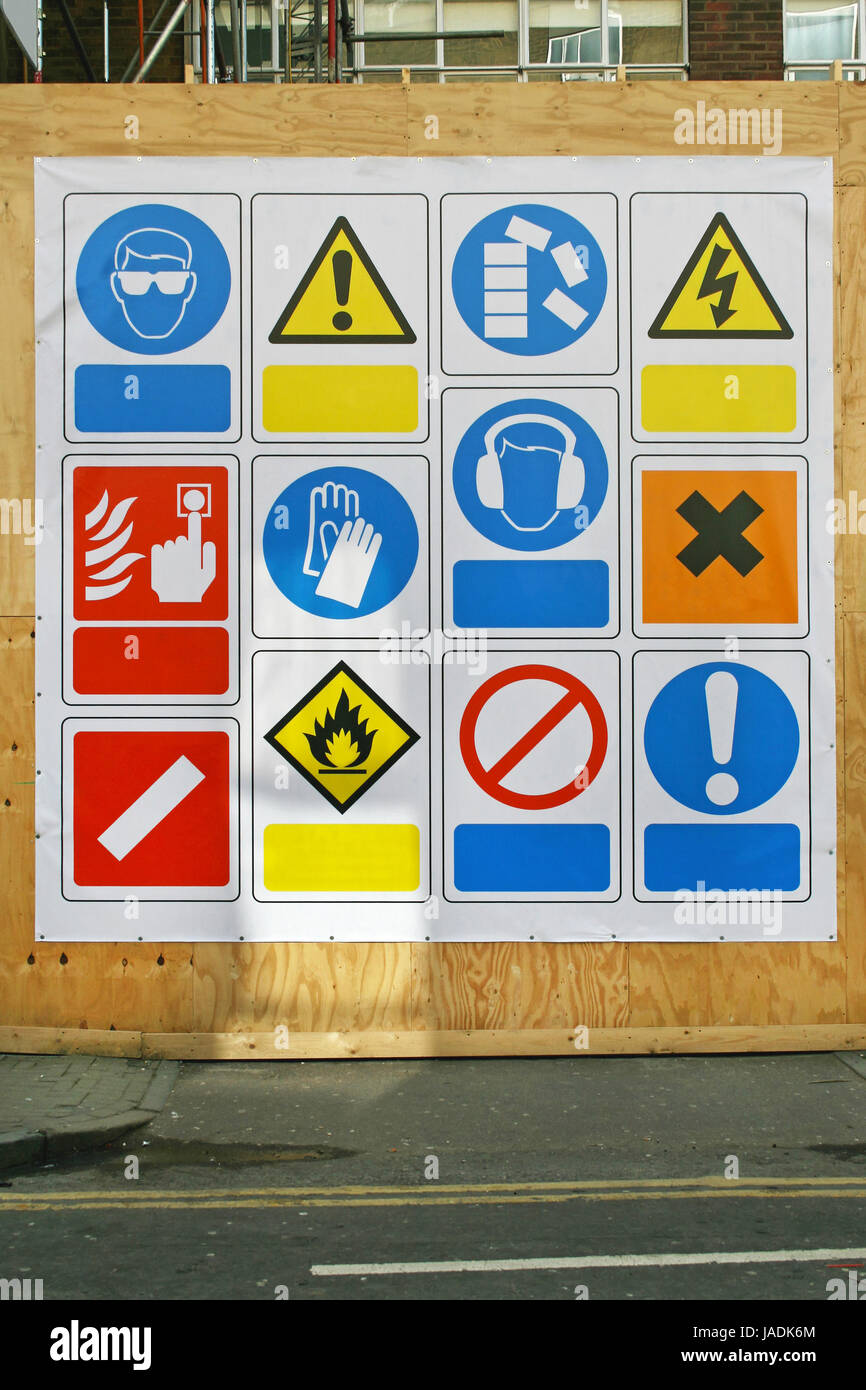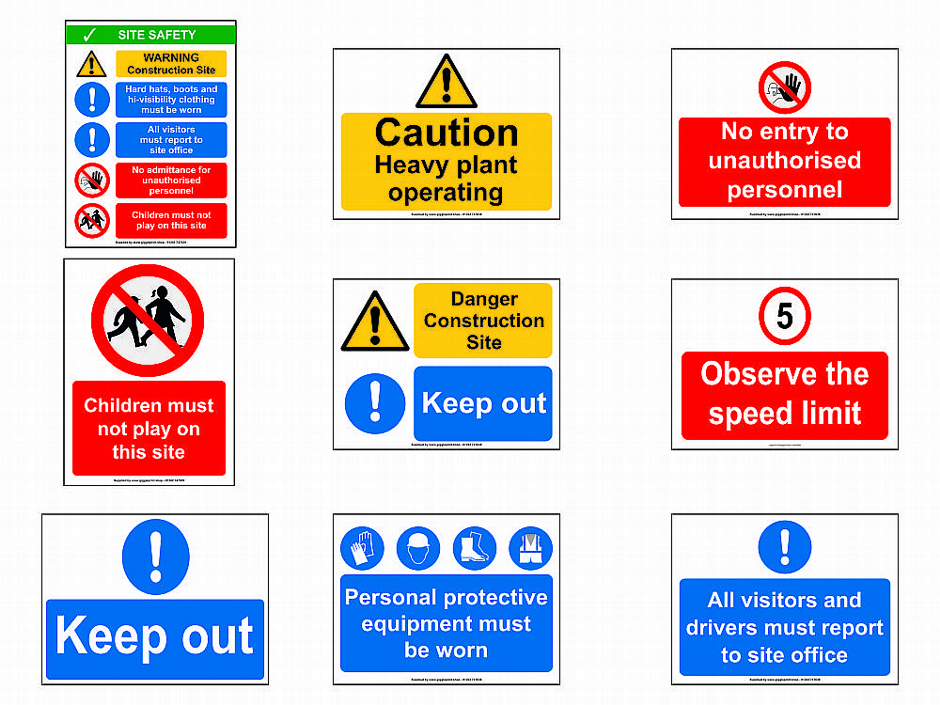Overview to Selecting the Right Safety Signs for Any Kind Of Atmosphere
Selecting the appropriate safety indicators for different environments is an important aspect of threat administration and regulatory conformity. It needs a complete understanding of the particular threats existing, as well as an awareness of the lawful frameworks governing indication usage. Furthermore, the effectiveness of security signage depends upon thoughtful design and placement to ensure maximum presence and understanding. As we discover the ins and outs of this topic, one need to consider just how these elements not only improve safety however additionally add to a society of recognition and obligation within any kind of company. What elements should be focused on in this essential procedure?
Comprehending Safety And Security Sign Types
Safety and security signs play an important function in keeping a secure environment, and recognizing the various kinds is important for efficient communication of risks. These indications are classified primarily right into 4 types: indication, necessary signs, prohibition indicators, and informative indications.
Caution indications are typically yellow and triangular, signaling individuals to possible dangers that may create injury or damage. Mandatory indicators, commonly circular and blue, show activities that need to be taken to ensure safety and security, such as putting on individual safety tools.
Understanding these categories help in picking the ideal signs for details atmospheres. By utilizing the correct safety and security indicators, organizations can effectively connect risks, promote conformity with safety and security protocols, and eventually cultivate a society of safety that safeguards staff members and site visitors alike.
Examining Your Setting
Evaluating the particular attributes of your setting is fundamental to selecting the suitable safety and security indicators. Different setups, such as industrial facilities, building and construction sites, or workplace settings, each present one-of-a-kind risks and functional contexts that must be thought about.
Begin by recognizing potential threats within your environment. For circumstances, in a manufacturing plant, heavy machinery and high sound levels may demand indications showing personal protective equipment (PPE) requirements, while a health care setting may require signs notifying staff to biohazard locations.
Next, analyze the physical format of the area. Think about the visibility of indicators; they must be put where they can be easily seen and recognized by people moving via the area. Evaluate lights conditions, as poorly lit areas may call for illuminated or reflective signs to enhance presence.
Additionally, take into consideration the target market interacting with the indicators. Diverse labor forces may demand multilingual signage or icons that communicate messages plainly without reliance on message. Evaluating these variables will make certain that the security indicators selected properly communicate essential safety measures, inevitably fostering a more secure environment for all.
Regulatory Compliance Factors To Consider
Understanding regulative conformity is vital when selecting security indicators, as it ensures that your signs fulfills both legal demands and sector standards - Health and Safety Signs. Compliance with regulations not only secures your company from potential fines yet also enhances work environment security and advertises a society of responsibility
First, familiarize on your own with the pertinent laws and policies that put on your certain sector. This might include federal, state, and regional mandates, as well as details guidelines from organizations such as OSHA (Occupational Security and Health And Wellness Management) or ANSI (American National Standards Institute) These laws determine the types of signs required, their placement, and the language used.
Next, take into consideration the details threats existing in your setting. Particular industries, such as construction or manufacturing, may have one-of-a-kind signs needs that reflect the risks included. Furthermore, ensure that your signs are compliant with ease of access requirements, making them quickly understandable for all employees.
Creating Effective Safety Indications
Reliable safety and security indicators are not only a regulatory requirement but also a crucial element of a detailed security technique. To develop effective safety signs, it is vital to prioritize clarity and presence. Using universally identified signs and straightforward language can dramatically enhance understanding. Indicators need to Safety Signage be made with high-contrast shades to guarantee they are easily readable from a range, even in low-light conditions.
Additionally, the placement of safety and security indicators is critical. Safety Signs. Indicators must be positioned at eye degree and in places where they can be conveniently seen by people in the location. It is also crucial to take into consideration the particular target market; for instance, check in industrial environments might call for even more technological language, while those in public rooms need to remain straightforward and available
Incorporating appropriate measurements and materials is one more important variable. Indicators must be weather-resistant and sturdy if put outdoors, while interior signage may require various factors to consider based upon the environment. Inevitably, the objective of making security indications is to communicate important details effectively, making sure that individuals can rapidly comprehend possible risks and react suitably, thus cultivating a much safer environment for everybody.

Maintenance and Updates
Consistently conducting maintenance and updates for safety and security indicators is vital to guarantee their continued performance and visibility. With time, environmental variables such as sunshine, rainfall, and wind can deteriorate the materials utilized in security indicators, causing fading, peeling off, or full fragmentation. Consequently, regular assessments ought to be scheduled to analyze the condition of all safety signs within any offered setting.
Upgrading safety and security indicators is just as essential, particularly when there are modifications in procedures, guidelines, or threats. Organizations needs to stay abreast of regional legislations and market standards to guarantee conformity. Health and Safety Signs. When alterations are made to the office, such as new machinery installments or alterations in design, matching updates to safety indicators have to be implemented instantly
It is additionally advisable to preserve a regular stock of security indicators, guaranteeing that substitutes are easily offered. This proactive technique lessens downtime and improves security by alleviating risks related to outdated or damaged signage. To conclude, an effective upkeep and upgrade technique for safety indications not only maintains their functional honesty however likewise reinforces a culture of safety and security within the office.
Conclusion
In recap, the selection of proper safety signs is crucial for making certain a risk-free environment. A complete understanding of the types of indicators, comprehensive analysis of potential threats, adherence to governing standards, reliable layout concepts, and routine upkeep contribute to boosted communication and safety and security. By applying these strategies, companies can cultivate a culture of security that promotes and protects people compliance with safety laws, ultimately resulting in a much safer and extra secure office.
Examining these aspects will certainly ensure that the safety and security indicators chosen successfully communicate required preventative measures, ultimately fostering a safer environment for all.
Effective safety indications are not only a regulatory requirement but likewise a crucial part of a comprehensive security strategy. Eventually, the goal of designing safety and security indicators is to connect necessary info properly, making certain that people can promptly recognize prospective hazards and react suitably, thus promoting a much safer setting for every person.
In conclusion, an effective maintenance and update approach for security signs not only protects their practical honesty however likewise reinforces a culture of safety within the workplace.

Comments on “Comprehensive Health and Safety Signs: An Overview to Effective Workplace Interaction”